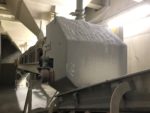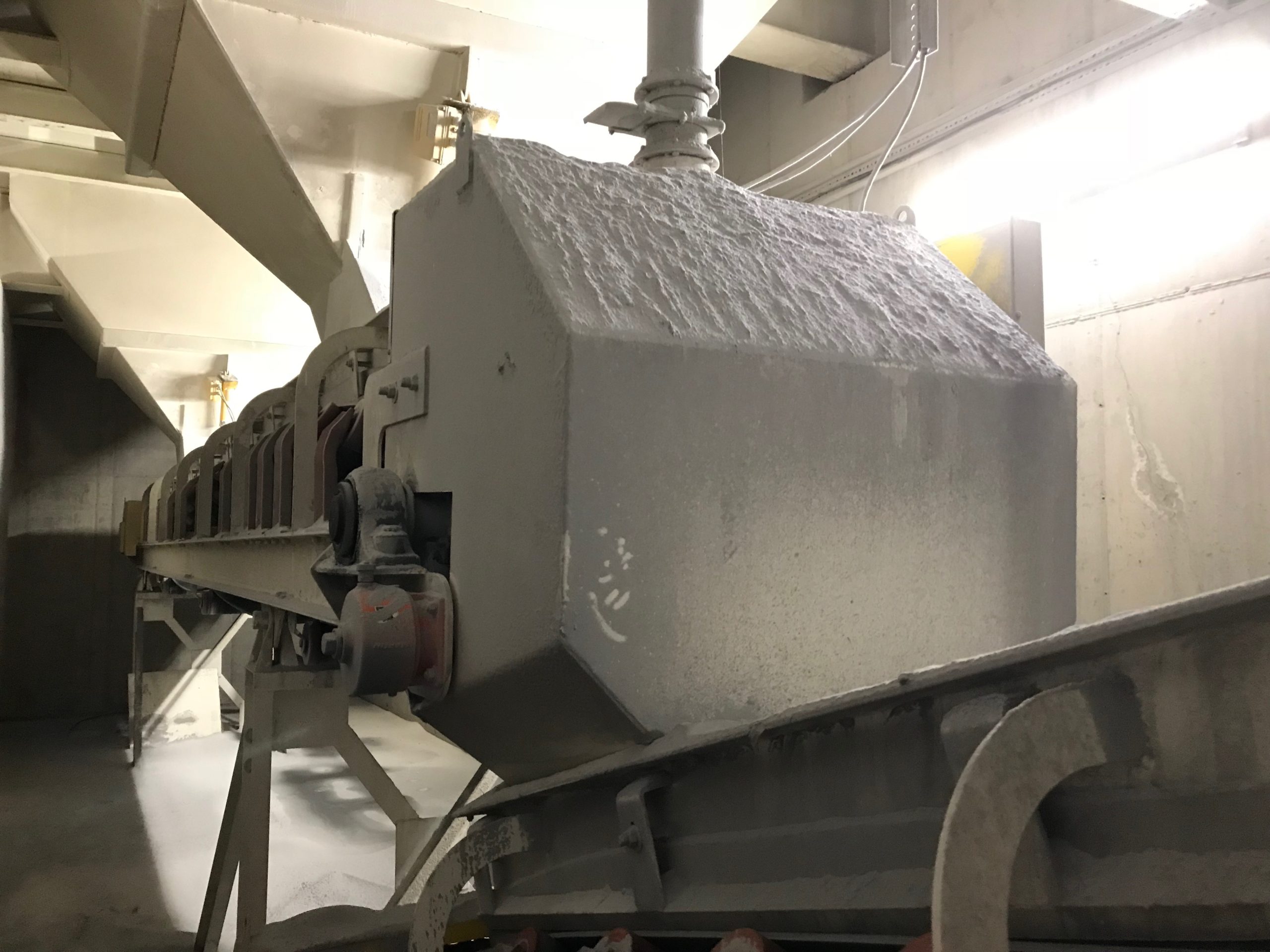
Enclosure

For many applications bulk material and dust containment are very important and this is an area the screw conveyor really has the advantage. A screw conveyor is completely enclosed with a sealed cover and can even be purged or put under vacuum for severe containment applications. A belt conveyor can theoretically be enclosed but it is a very expensive solution and for the most part not feasible. Related to enclosure, and in many cases more important, is the screw conveyor enclosure also means operator exposure to rotating machinery is eliminated. The only exposed moving parts are the shaft and bearings at the trough ends and they can be easily enclosed, as well. By contrast, a belt conveyor has hundreds and thousands of exposed moving parts all of which pose a major safety concern to operators.

Particle Size
One factor driving the selection of belt conveyors over screw conveyors is bulk material particle size. For the most part a screw conveyor does not perform well with large clump and/or non-granular bulk materials. This is due to the allowable distance between the flight pitch and OD of the center pipe to the ID of the trough. There is only so much open space and clumps can get bound up and potentially clog the screw conveyor. By contrast the belt conveyor can handle these materials with out too many concerns because there are not the same size constraints.
Distance

The conveying distance of the application is another obvious driver of selection of a belt conveyor over a screw conveyor. A screw conveyor is limited in length by how much torque the drive shaft can handle. This maximum effective distance for a screw conveyor is usually about 60ft-80ft. By contrast a belt conveyor can pretty much be as long as desired with applications in excess of 10 miles.
Indoor/Outdoor

Whether the conveyor is indoors or outdoors does not necessarily determine a belt conveyor or screw conveyor. For the most part, when a conveyor is indoors there is also a need for dust containment and isolation from mechanical parts, so a screw conveyor is more popular. There are also plenty of applications where the distance and particle size drive towards a belt conveyor and a robust dust collection and guarding system are used.
Price
For an application where a screw conveyor can accommodate the conveying distance and the other factors above favor neither a belt conveyor or screw conveyor the screw conveyor is less cost. The screw conveyor will almost always be less cost simply because they are modular, the parts are built in bulk and stocked in thousands. Belt conveyors are somewhat modular, at least the idlers and pulleys are, but the frames are all custom designed and specifically built for each application meaning there will always be more costs.
Need a screw conveyor? Click here for our stock screw conveyor kits or contact us at [email protected] or 1-800-454-2169

